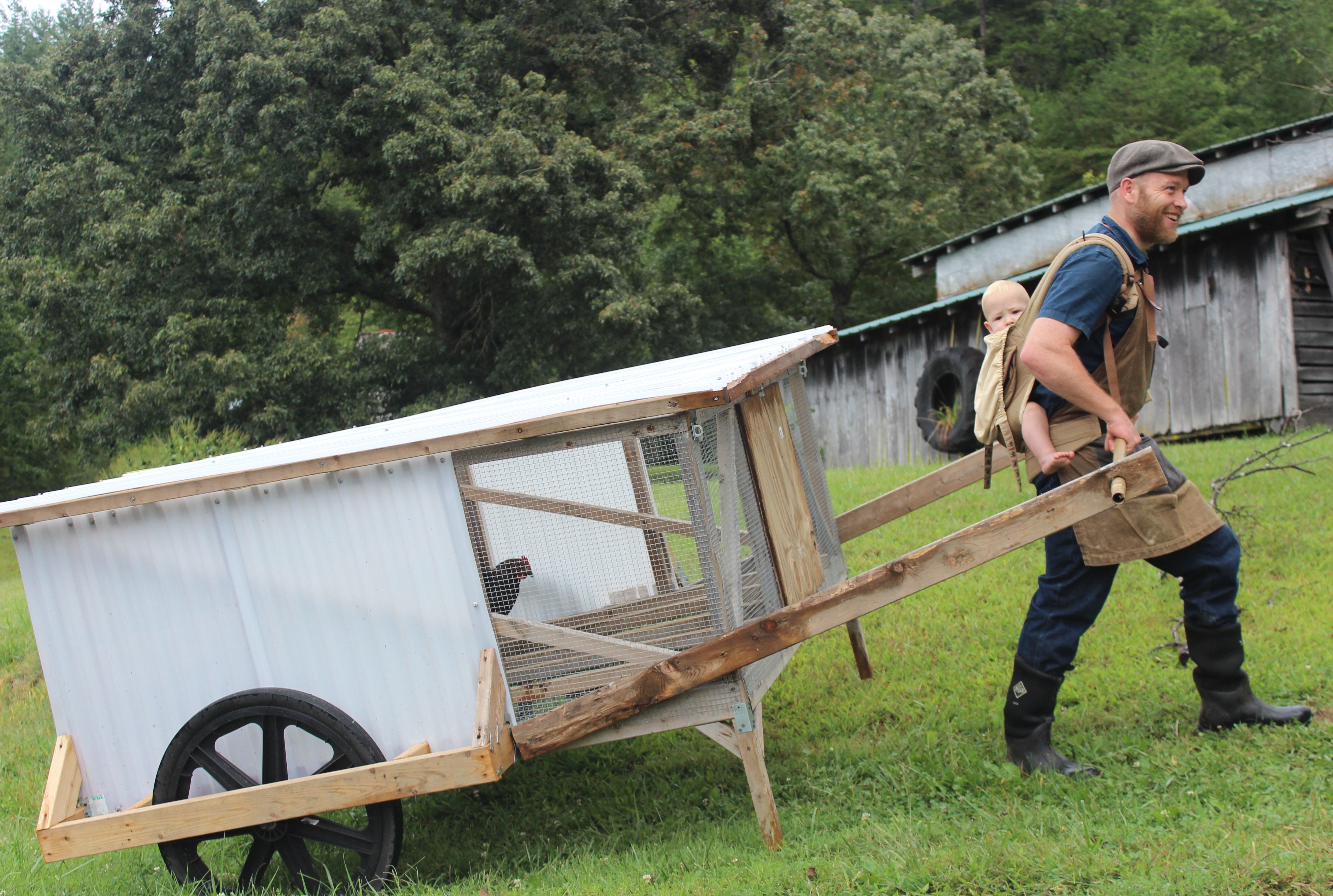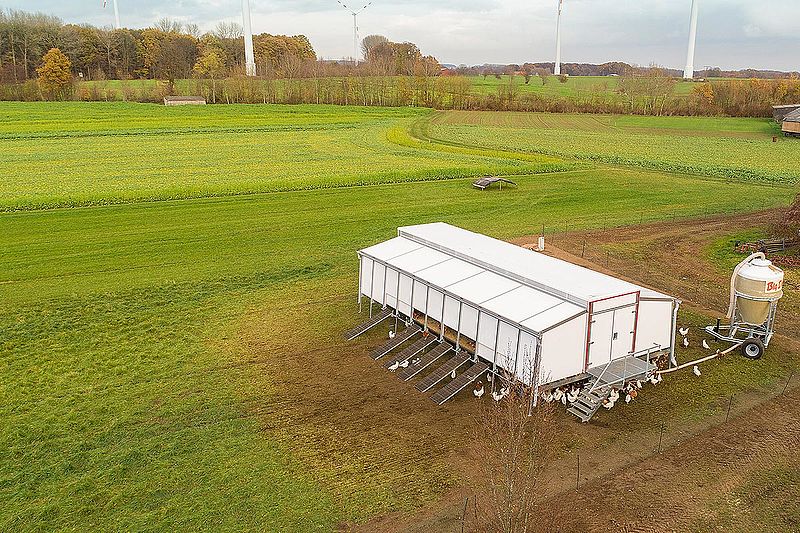



Are mobile housing units a boost for free-range farmers?
Comparing the advantages and disadvantages of mobile layer units in Australia as a model for other hot climates.In hot climates such as Australia, free-range egg farming faces additional extra set of challenges. Mobile layer units offer an adaptable solution – but also have their own drawbacks
The free-range egg industry in Australia is rapidly expanding, with over half of all shell eggs sold on supermarket shelves labelled as free range. This expansion has led to farmers adapting old layer and broiler houses into free-range systems, and many producers have begun using mobile housing units. In fact, a recent survey of Australian free-range egg farmers found that 53 percent were using mobile housing units.

Mobile layer units are small, portable laying houses that can be towed to new locations on the farm by a tractor or truck. They can be quite variable in design, from sophisticated commercial options that use solar power to run the lights and automated feeding systems through to home-made “caravans” that just provide a basic structure to perch and nest in.There is not much in the way of guidelines or standardised information available for producers entering semi-intensive free-range farming in Australia, and they may have to learn by trial and error. Here are some of the pros and cons of using mobile layer units.
Advantages
Pasture rotation
The main advantage of using mobile units is the ability to move flocks between different areas of the property to reduce the damage to pasture. It is stipulated in many accreditation programmes that free-range hens should have access to vegetation, and 74 percent of free-range farmers have reported that they are able to maintain constant access to vegetation on the range through pasture rotation. The continual relocation to fresh pasture also encourages more hens onto the range.
The ability to move the layer house also means that free-range hens can follow other grazing species or crops on diversified farming systems. This allows the hens to contribute to fertilisation, tillage and insect and weed control on the farm, as well as producing eggs.
Pasture rotation also reduces the nutrient load being deposited into the soil through bird manure, reducing the environmental impact of mobile layer units.
While access to pasture can also be rotated in fixed laying houses by using fences and pens, the parasite burden and nutrient load can still accumulate in the soil due to the permanent nature of the building.
Reduced parasite burden
Mobile housing units typically have smaller group sizes (250 to 2,500) than fixed houses, and when low stocking densities (up to 350 hens per hectare) are combined with regular pasture rotation, this can result in a significantly reduced parasite load on the soil (Ruhnke 2015). However, this will not provide complete protection from all parasites, and little is known about the prevalence rates and impact of parasites on free-range flocks in Australia. Around 20 percent of producers feel they have unsatisfactory options available for addressing parasites under free-range conditions.
Popularity with consumers
The bucolic image of small groups of hens roaming in lush pasture with a small chicken caravan to roost in is popular with consumers and attracts a premium price.
Potentially better protection from guardian dogs
Livestock-guardian dogs that live with the hens and protect them from predators are increasing in popularity with Australian free-range producers. While there is very little research on their use in mobile layer units, these dogs are most effective when they are guarding groups of 100 animals or fewer. Thus, using one or two guardian dogs may be more effective with the smaller-sized flocks used in mobile layer units rather than in large fixed houses.

Disadvantages
Heat stress
Many mobile layer units do not have any environmental-control systems, making them vulnerable to climatic extremes. Heat stress is a major challenge for free-range laying hens in Australia and is the second-highest cause of mortality after predation. For hens housed in mobile layer units without climate control, retreating into the house cannot provide relief from the heat as the indoor stocking density does not provide the space needed for the hens to dissipate heat. Often they must rely on sources of shade on the range such as trees, artificial structures and underneath the mobile house.
Providing cool drinking water during high temperatures is also a challenge in mobile units. For mobile layer units that use small tanks or open water sources, such as bell or trough drinkers, the water can heat up during hot weather and exacerbate the heat stress experienced by the hens. Cool drinking water is vital for ameliorating heat stress, and placing the drinkers and water tanks in the shade and regularly flushing the water lines can help to reduce the heat load on the flock.
Feeding on the range is a biosecurity risk
Many mobile layer units place their feed source out on the range, in open-access troughs or pan feeders. This practice is employed due to a lack of space inside the mobile unit, or to encourage the hens out onto the range. Feeding on the range attracts wild birds and rodents to the area, which presents an increased risk to biosecurity and disease control.
Additional labour
Many mobile layer units require manual egg collection, either by collecting the eggs from the nests by hand, or by packing the eggs from an egg conveyor into trays. In addition, the mobile layer units must be regularly moved to fresh pasture, although the frequency of this will be dependent on the season and pasture quality on each farm. Moving the layer house will involve packing up the equipment associated with the house, such as feeders, drinkers and fencing, towing the unit to fresh pasture and then setting up all of the equipment again.
However, whether this additional labour is considered to be a problem or just part of the job will obviously depend on individual producers’ attitudes and their additional workloads.
Increased mortality rate
Several studies have reported higher mortality rates and poorer foot health in mobile laying houses, although only one (unpublished) study could be found comparing mortality rates under Australian conditions (Iqbal et al, 2017). In this study, the mobile layer units had a total mortality rate of 5.6 percent compared to the mortality rate in fixed free-range houses of 4.4 percent. The possible reasons for this discrepancy were not discussed.

Conclusion
In conclusion, there are advantages and disadvantages to using mobile layer units in Australia. The main advantages relate to the improved pasture quality that the hens have access to while ranging. The main challenges relate to the climatic extremes experienced under Australian conditions, and it is vital that heat stress is managed correctly in mobile units. With the increasing popularity of mobile layer units, more research is needed to determine the best-practice operation of these systems to ensure efficient production and optimal hen welfare.
| References | ||||
|---|---|---|---|---|
| Iqbal, Z., Perez-Maldonado, R. A., Drake, K., Swick, R. A. & Ruhnke, I. | ||||
| (2017) | The effects of pecking stones, housing system and age on plumage conditions and mortality of free range egg laying hens. 28th Annual Australian Poultry Science Symposium | Sydney, Australia | ||
| Lambertz, C., Wuthijaree, K. & Gauly, M. | ||||
| (2018) | Performance, behavior, and health of male broilers and laying hens of 2 dual-purpose chicken genotypes. Poultry Science | 97 | ||
| Ruhnke, I. | ||||
| (2018) | Free-range egg production in Australia – industry trends and challenges. Lohmann Information | |||
| Scott, A. B., Singh, M., Toribio, J. A., Hernandez-Jover, M., Barnes, B., Glass, K., Moloney, B., Lee, A. & Groves, P. | ||||
| (2017) | Comparisons of management practices and farm design on Australian commercial layer and meat chicken farms: cage, barn and free range. PLoS ONE | 12 | ||
| Singh, M., Ruhnke, I., Koning, C. D., Drake, K., Skerman, A. G., Hinch, G. N. & Glatz, P. C. | ||||
| (2017) | Demographics and practices of semi-intensive free-range farming systems in Australia with an outdoor stocking density of ≤1500 hens/hectare. PLoS ONE | 12 | ||
| Van Bommel, l. & Johnson, C. N. | ||||
| (2012) | Good dog! Using livestock guardian dogs to protect livestock from predators in Australia’s extensive grazing systems. Wildlife Research | 39 |









